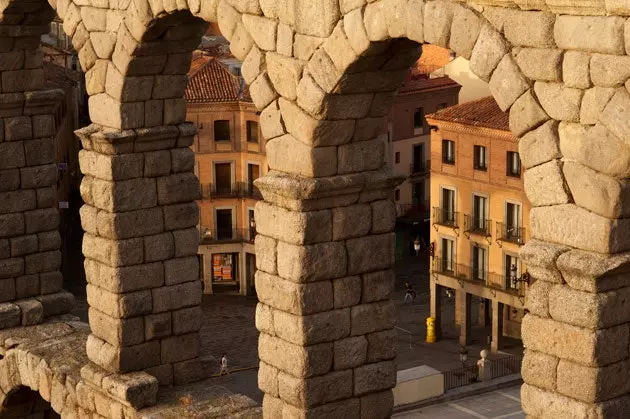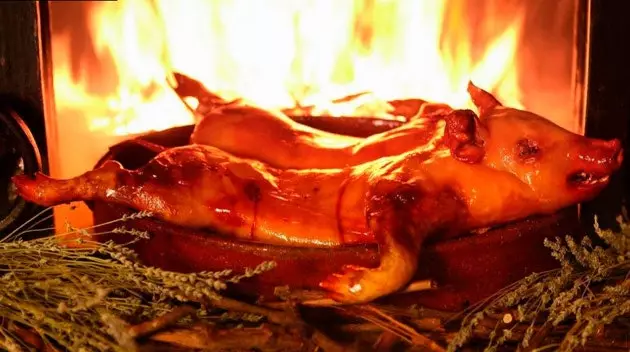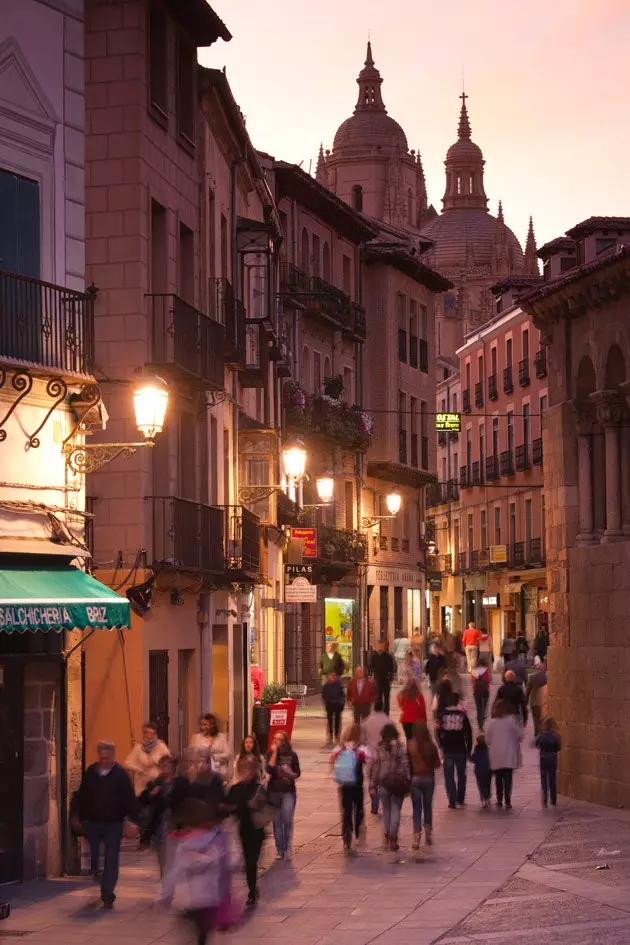
There is Segovia behind the Aqueduct
In front of the Mesón Cándido, races, classes and ways of seeing the world walk daily . I myself, on different visits, have come across members of the Royal Family, soccer players with a golden ball, Hollywood actresses, many Japanese, another good handful of retired farmers, groups of Indians and Africans in multicolored robes, communions, excursions from school...
Segovia, starting from the Aqueduct, is a well-oiled tourist machine -with suckling pig fat - which receives and says goodbye every day to large volumes of visitors who come to look for the city that does not change: the Romanesque World Heritage Site, the Alcázar or the Cathedral. The same places that go a little unnoticed by Segovians, who, for example, rarely inhabit Calle Real (the one that goes from Azoguejo to Plaza Mayor), but walk through it continuously. They live in a city spiritually closer to Madrid than to Valladolid, surprisingly active when it comes to culture and with a de-stressed and playful everyday spirit , manufactured, together with the treacherous Segovian constipated, in the skies of the Sierra. Part of that Segovia, everyday and extraordinary, is what is present in this selection of things that a Segovian does.
1)San Frutos Pajarero . The patron saint of birders has a statue on one of the facades of Segovia Cathedral in which he is seen holding a book. In it is written the life and death of all Segovians , who meet at his feet once a year (at midnight on October 24) to see how San Frutos turns the page and gives the city a new opportunity.
2) Torrezno. The owner of this store is known as Paco Cueros. He began by making handmade leather objects that were taken from his hands and continued with some t-shirts in which he mixed piglets (Segovia's unofficial mascot) with current affairs, movies or very Segovian and wearable jokes. The success of the shirts ended up deciding him to open a store in Cronista Lecea, between the Plaza Mayor and the Jose María restaurant. In the window, suckling pigs as characters from Tarantino or Woody Allen and garments with the “Castilla y Lechón” logo.
3) Hotel Candido. The history of the Mesón de Cándido begins to be as amazing and eternal as that of the Aqueduct itself . One walks through its rooms with views of the Roman canal and finds photos of Cary Grant, Unamuno or Ronaldo. Cándido's family -appointed Mesonero Mayor de Castilla and represented in a Segovian statue splitting the suckling pig with a plate that he then broke, as his descendants continue to do- practices hospitality next to the Aqueduct, but also in the lesser-known Hotel Cándido, which offers to combine suckling pig, spa and large classic air beds, a batch that fits like a glove or a happy digestion.

The mythical suckling pig of Mesón Cándido
4) Jose Maria Restaurant. Segovia is one of those blessed cities where with the drink they put a lid. A generous cover (usually double) and that has nothing to envy to the payment ones. One of the places where things get sublime is Jose María, a steakhouse that Segovians will recommend without hesitation. Especially because the tapas have all these characteristics and the house wine is Pago de Carraovejas, whose winery is owned by Jose María.
5) Alcazar pastry shop. You need to like sweets fanatically to be able to eat more than one portion of Segovian punch, the yolk cake, sugar and then more yolk and sugar. It happens to me, and once I'm hyperheated, I usually buy it at Alcázar, the pastry shop in the Plaza Mayor where, they say, it was invented. You have to be an early riser to get your piece of cake from here, especially on weekends.
6)WIC. Winter Indie City is a concert schedule fiercely independent and that now ends up in the Beat room. Until spring, Juanita and the Ugly Ones go on stage the same as Havalina, The Mutant Children or Luis Brea.
7) Ingenuity Boy. Julio Reoyo, who got the first Segovian Michelin star with his Villena restaurant , he is in charge of the kitchen of the restaurant of the recently rehabilitated Casa de la Moneda, in an idyllic walk, the Alameda del Parral, on the banks of the Eresma. Large windows and a light current air in a space that could not be more classic: the oldest industrial building in the world, founded by Felipe II to mint the currency of the entire Empire. Reoyo's kitchen has something of this, with some raw materials attached to the earth and its history and where the technique tries to be light , as if he didn't want to get in the way of the flavor, the absolute protagonist of the dishes.

The Segovia of the Segovians
